This summer and fall, Friends of the San Juans is leading a series of shoreline restoration projects across the islands, from Shaw Island to Eastsound on Orcas. These efforts do more than meet the eye—they help revive the ecological function of our shorelines and strengthen the health of our island communities.
Thriving and balanced shoreline ecosystems are essential for wildlife that’s foundational to the islands: eelgrass, forage fish, salmon, and orcas. When left in their natural state, shorelines buffer against flood hazards and improve water quality. But restoration doesn’t happen overnight. Behind every successful project are years of interconnected efforts in science, site design, and community building.
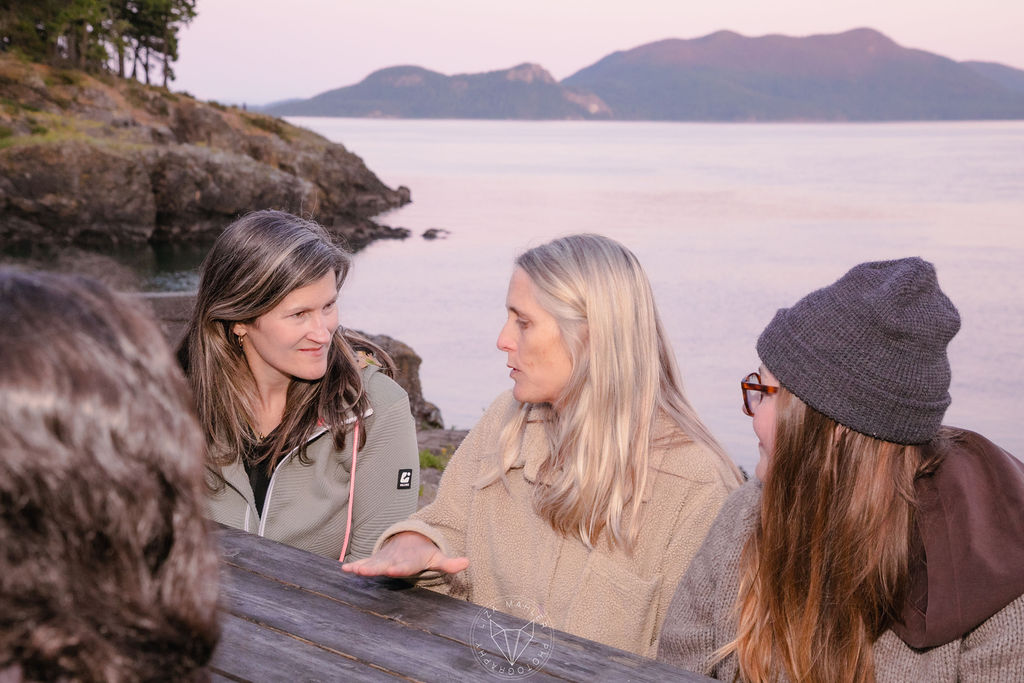
“Friends of the San Juans began filling a critical gap in shoreline science and restoration more than two decades ago, and we continue to lead efforts to protect and restore coastal habitats throughout the San Juan Islands,” said Eva Schulte, Executive Director of Friends. “To date, these projects have brought over $5 million in investment to local communities, advancing both ecological health and economic resilience.”
“It’s encouraging to see Friends advancing shoreline restoration across these islands,” said Peter Guillozet, Orcas Preserve Steward at the San Juan County Conservation Land Bank. “Whether through science-driven monitoring, design and permitting support, or advocacy for healthy nearshore habitats, they’ve been terrific partners in our efforts to protect and restore the Land Bank’s shoreline preserves. This year alone, they will make major contributions to hazard removal and habitat enhancement at multiple sites in East Sound.”
Each project is a carefully choreographed effort rooted in science and fueled by community. It’s a strategic dance—more like a game of chess—requiring careful moves around seasonal and sensitive ecological cycles, all while coordinating barges with the tides.
“While the actual restoration work might take just days or weeks, even projects with enthusiastic and ready landowners can take years from concept to construction,” says Tina Whitman, Senior Science Director and Restoration Project Manager at Friends of the San Juans.
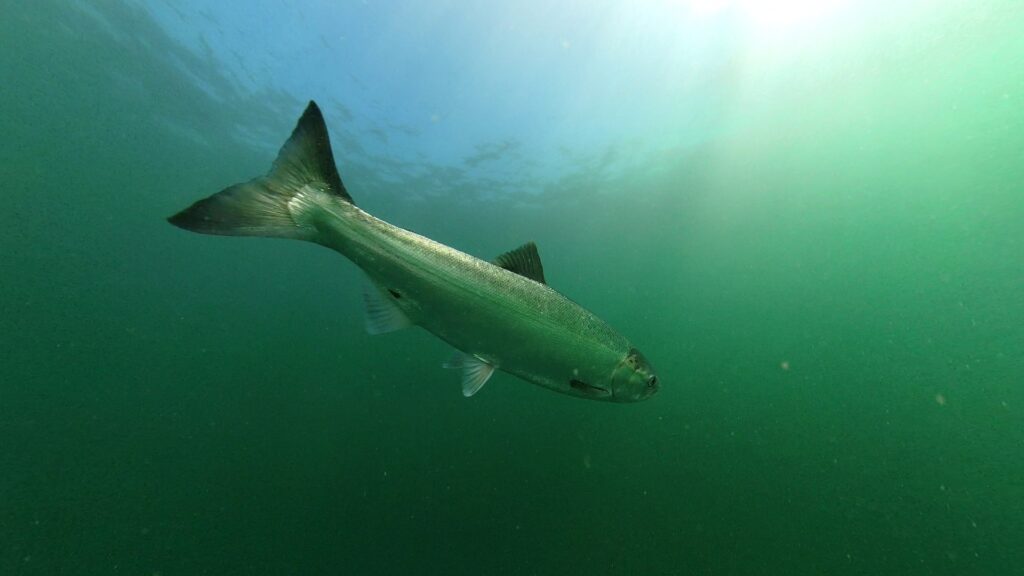
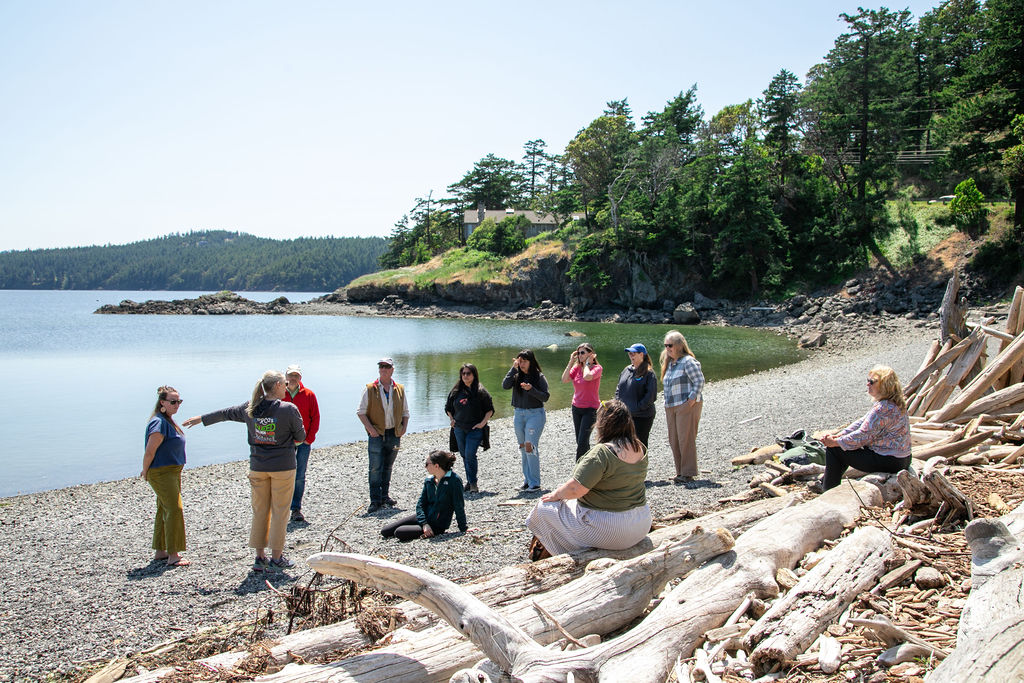
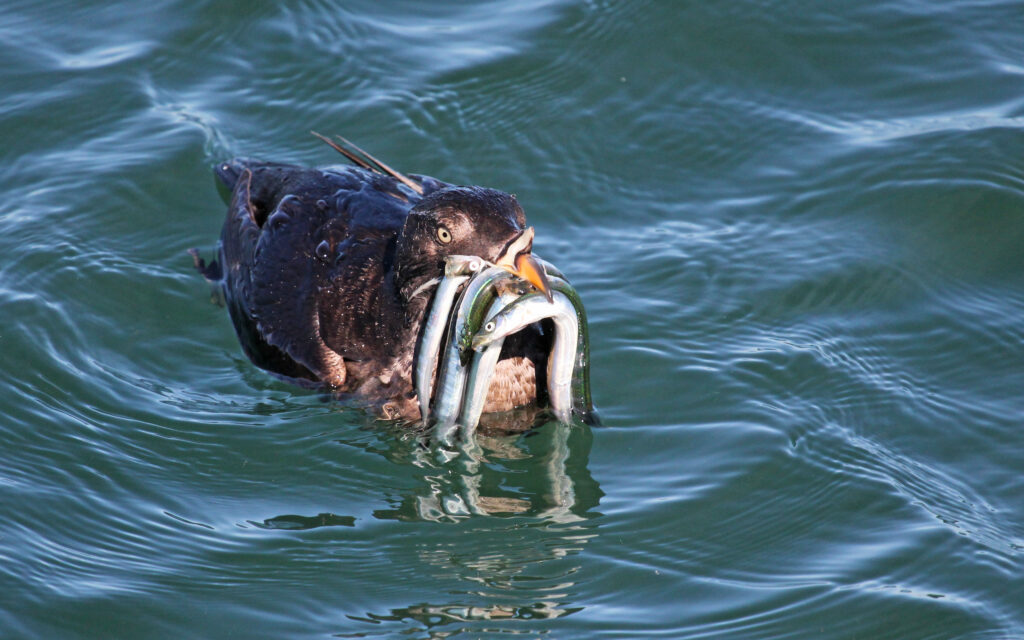
These efforts begin with in-depth site assessments—examining physical conditions, biological functions, and the historical and cultural context of the area. Engineering and design teams come next, alongside building strong, trusting relationships with landowners. Equally essential is meaningful engagement with Tribes. This work takes place within Indigenous homelands, and it’s not just about securing authorizations—it’s about respecting inherent Tribal sovereignty, cultural values, and treaty-protected rights.
Restoration projects must also navigate local, state, and federal permitting processes, secure a mix of grant and private funding, and complete pre-project monitoring. Construction is then carefully scheduled to align with tides and avoid sensitive fish spawning and migration periods.
“The future of restoration is in multi-benefit projects,” says Tina Whitman. “These efforts should do more than check one box—they must support Tribal treaty rights, rebuild food webs, protect the resiliency of island communities and enhance the overall health of shoreline ecosystems.”
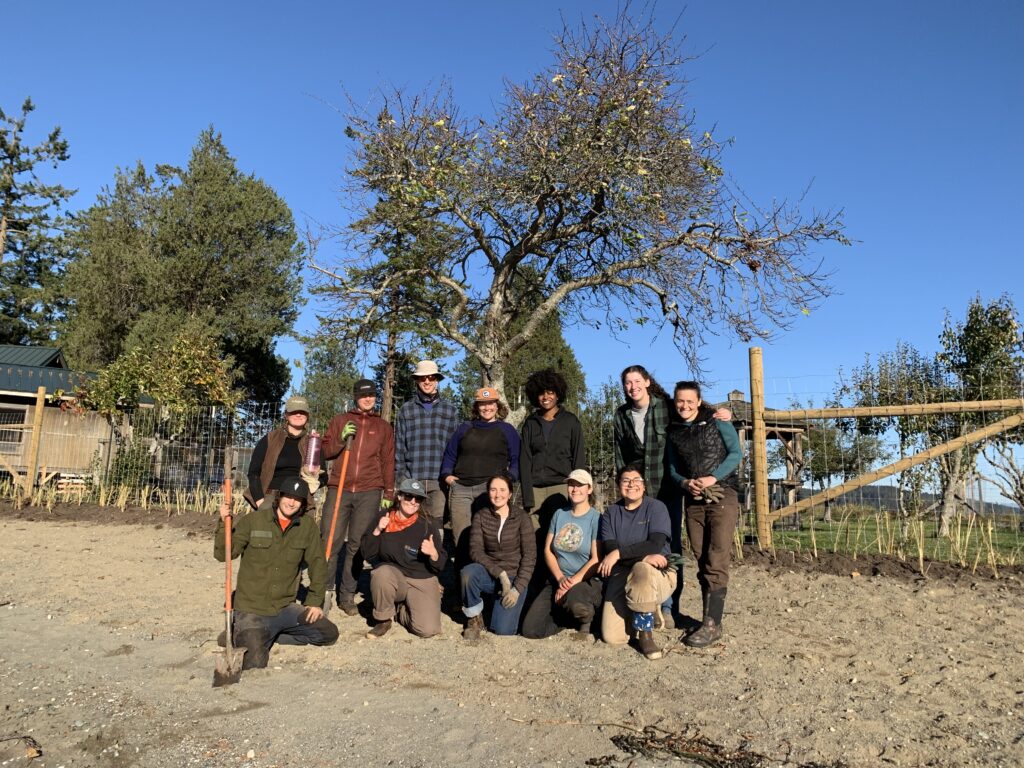
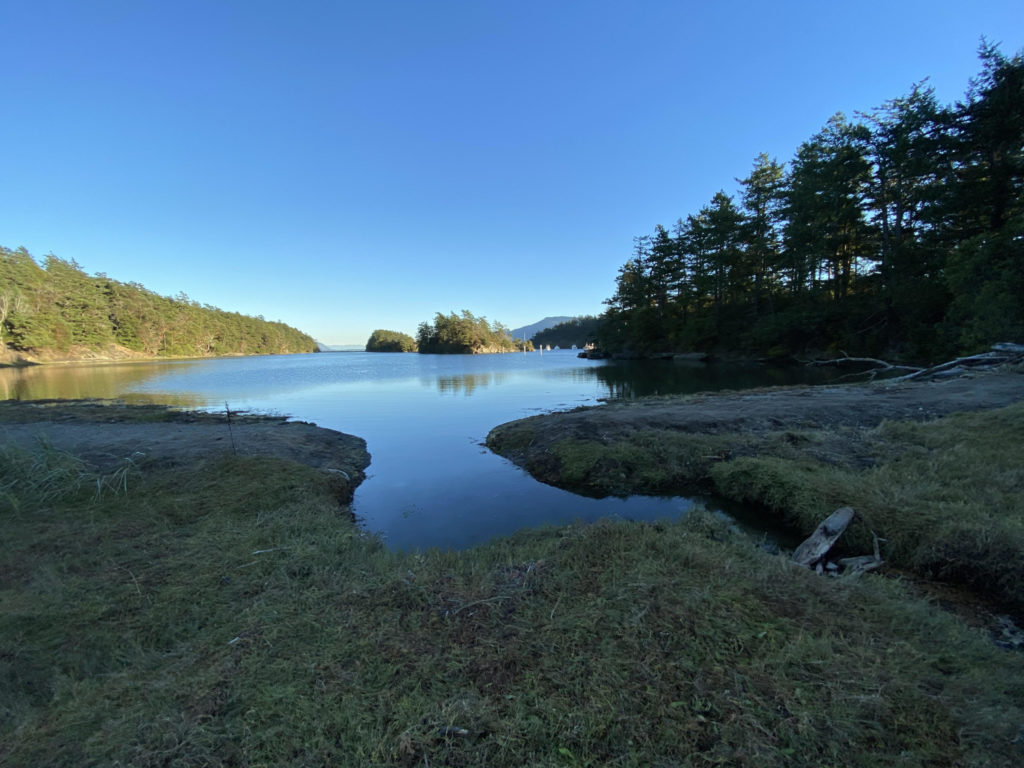
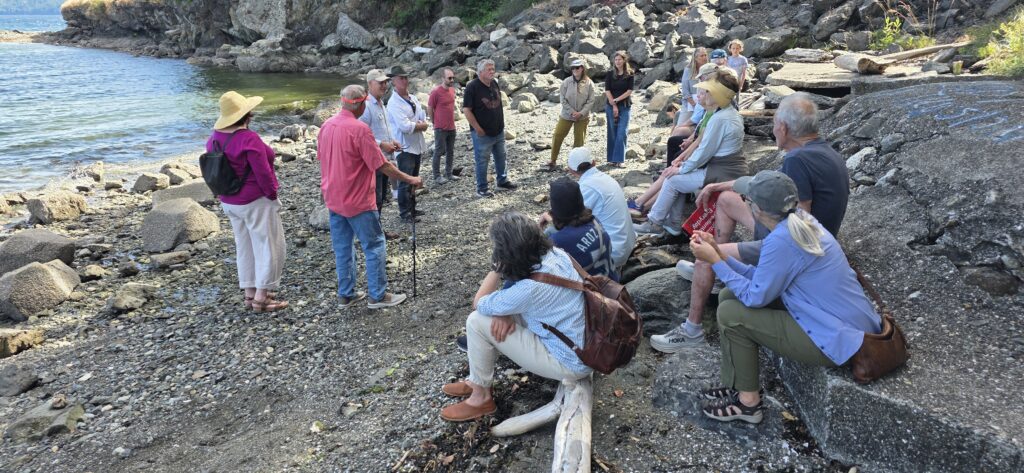
Following the listing of both Chinook salmon and Southern Resident killer whales under the Endangered Species Act more than two decades ago, Friends of the San Juans expanded its research on shoreline habitats, species, and human impacts. This science-driven work helps us identify key areas for protection and restoration, not just for the sake of data, but to recover critical food web connections, improve beach and eelgrass habitat, and support thriving populations of salmon and orcas. It’s the foundation for a delicate, complex, and often lengthy process involving landowner collaboration, engineering feasibility, and funding coordination—efforts that ultimately lead to healthier shorelines and a more resilient Salish Sea.
“Friends of the San Juans is such a dedicated team, passionate about preserving the region’s natural splendor,” shares Corrine Storey, who contacted Friends in 2019 for help restoring her shoreline property to its natural state and remove a failing structure. “They successfully removed a deteriorating bulkhead that had blocked beach access. Now, a naturally sloped beach runs the length of my property. Friends held my hand every step of the way and answered all my questions and concerns. I’m deeply grateful for their support throughout this long project.”
Years of restoration planning are paying off in tangible ways. At Blind Bay on Shaw Island, forage fish were documented spawning for the first time in twenty years, just weeks after intertidal beach habitat was restored. On Sucia Island, the Mud Bay salt marsh is now fully reconnected to marine waters, revitalizing habitat for juvenile salmon and shorebirds. These efforts continue across the islands this season.
Upcoming Shoreline Restoration Projects
- Neck Point, Shaw Island, August 4–14 | Armor removal and beach restoration to improve spawning habitat and restore natural shoreline function.
- Eastsound Waterfront Park, Orcas Island, September 15–21 | Armor removal and beach restoration for salmon, forage fish, and enhancement of public access.
- Northwest East Sound, Orcas Island, October | Piling removal to reduce in-water hazards and support eelgrass recovery and protect spawning herring..
- Throughout the San Juan Islands, July–September | Mooring buoy upgrades to protect sensitive habitat areas.
Collectively, these projects will remove hardened shoreline and marine debris, restore vital beach and eelgrass habitat, and improve climate resilience—creating space for forage fish to spawn, salmon to feed, and people and nature to thrive.
Over the decades, Friends has led or supported more than 30 nearshore restoration projects, each one rooted in long-term partnerships and a shared vision for healthier shorelines. These efforts reflect more than technical expertise; they embody deep collaboration with landowners, communities, and local partners. Shoreline habitat restoration is just one part of Friends’ broader mission to protect the San Juans through science, policy, and community action, now and for future generations.
Want to see a restoration site in action?
We’ll be sharing behind-the-scenes photos and updates throughout the season and inviting you to visit select sites during construction to witness this work up close. There’s nothing like seeing salmon habitat take shape right before your eyes. For updates, follow us on Instagram or Facebook, or sign up to receive monthly e-news updates.
Friends Broader Impact
For nearly 50 years, Friends has brought people and nature together to protect this place through:
- Advocacy and policy leadership
- Science, mapping, and shoreline restoration
- Community mobilization and legal action
- Immersive education and science experiences
Learn more about Friends science and restoration efforts
- Overview of completed shoreline restoration projects
- Shoreline ecosystem science and mapping
- Property owner support through the ShoreFriendly program
- Contractor resources

